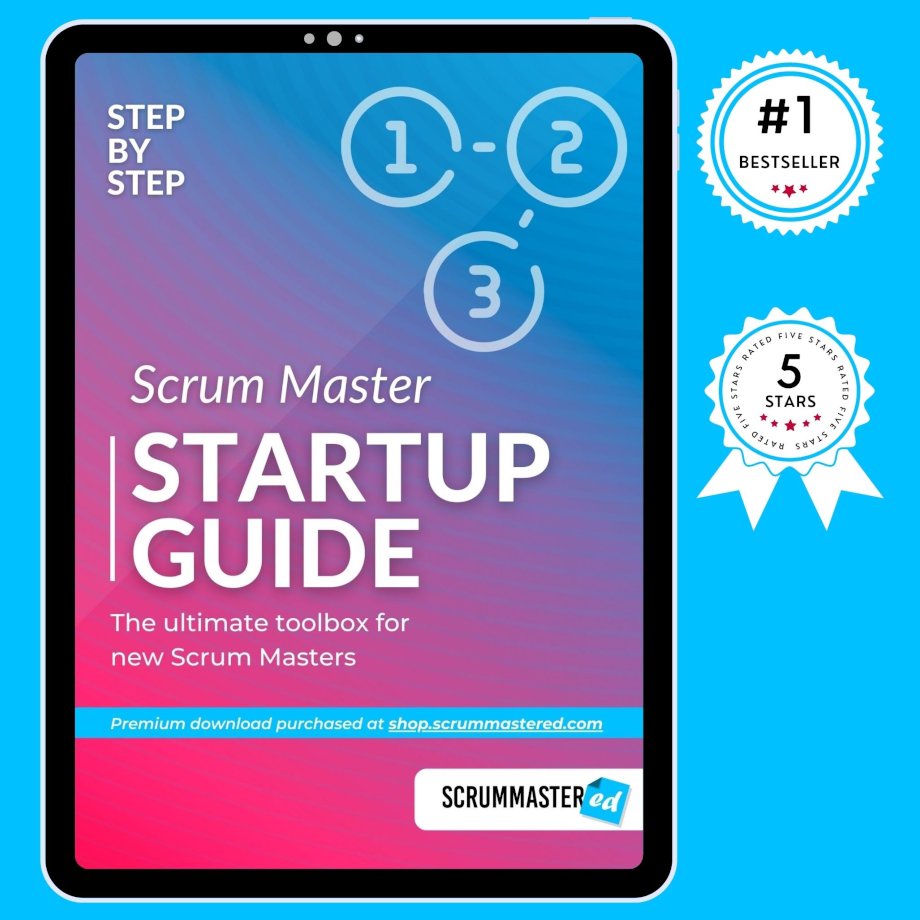Sprint Planning is the first meeting that happens every Sprint. Everybody has a role to play in it.
The Product Owner brings the Sprint Goal and describes what the team should work on. Developers estimate the work and decompose it into tasks they need to do.
But, what Scrum Master does in Sprint Planning can still be a mystery…
As a teacher, coach, and facilitator, Scrum Master has an important role to play before, during, and after Sprint Planning.
Let’s see what it actually is.
If you prefer to read instead of watching the video, keep reading 📖
What Scrum Master does during Sprint Planning
I’ve already done a few videos describing the Scrum Master role: “What does a Scrum Master do all day?” and “Scrum Master role in Daily Scrum”.
However, there are still lots of misunderstandings. So I decided to do a few more videos going into a bit more details on the typical Scrum Master day.

A lot of what I will be talking about in this video and more is actually part of my Scrum Master Startup Guide that you can get in my store.
There I go into much more detail about the role and give you specific action plans you can implement from day one.
While the Scrum Master has a role to play during the events themselves, there is more to do even before the Sprint Planning starts.
So I’d like to talk about this in three parts: preparation for the event, during the event, and after the event.
Preparation
If you don’t want your Sprint Planning to run forever or end without getting to anything useful, you need to help your team get ready.
I talked about the importance of preparation in my video “Better remote meetings”.
So what can you do to help your team prepare?
The very first part of the Sprint Planning is to agree on the Sprint Goal, the “Why” behind the Sprint.
Many teams are struggling with creating a good Sprint Goals. This is why this step and your facilitation of it are so important.
You need to help your Product Owner come up with a good idea for the goal before you actually start the meeting.
This will be a great input into the Planning event at the beginning.
One more thing to prepare is the Product Backlog itself. I don’t mean that you need to write user stories or anything.
What I mean is that the whole team needs to be familiar with the upcoming work items and get most of their questions answered before Sprint Planning starts.
That will save you a lot of time and make the meeting much more productive.
To achieve that, you might need to work with the team, encourage and facilitate refinement sessions, chase some people, and more.
If you need help with creating Sprint Goals, I encourage you to check out my guide “Product and Sprint Goals”
In-meeting facilitation
An important note I want to put here is that the Scrum Master is not the sole meeting organizer and host.
It can be something you do when requested or needed, but it’s the whole team’s responsibility to get the most out of each Sprint event.
So, what does a Scrum Master do during Planning meeting then?
Something that you would do every time:
- Remind the purpose of the Sprint Planning and the agenda.
- Drive the discussion around the Sprint Goal, the Sprint Backlog.
- Facilitate estimation, tasks decomposition, splitting user stories if needed.
- Keep the discussions on point and keep track of time.
It’s easier if you have a set structure for the meeting that you can always rely on.
For example, a clear agenda in the meeting description will help everyone stay focused.
Once your team gets familiar with how the Planning is run, it will become much more productive and to-the-point.
That’s what Scrum Master Startup Guide is for, as I share templates and concrete action plans you can rely on.
After the meeting
Ok, now that you have finally gotten to the end of the meeting, what’s next?
I know that the first thought that came to your mind most likely is that the Scrum Master now needs to send the meeting notes that he or she taken during the meeting.
I’ll have to disappoint you.
While a Scrum Master can help with this task, remember, that it’s the whole team’s responsibility.
It’s good to have a rotation of who takes notes if any, to keep that sense of ownership in the team and minimize the team’s reliance on the Scrum Master.
The way I like to approach it is by giving an easy-to-use template the team can fill in.
Now, having this documentation is not a rule, it’s not mandatory, but I find it extremely helpful for the team as you can always come back to it at a later point for reference.
For example, you want to check why certain decisions were made, information on capacity, and maybe any problems raised during discussion.
It can be a great tool to use as input into retrospectives.
[convertkit form=3423219]
In conclusion
As you can see, there are quite a few things a Scrum Master needs to do for Sprint Planning to help the team be more effective.
And what is your To-Do list for Sprint Planning? Do you have one? Share in the comments below 👇




